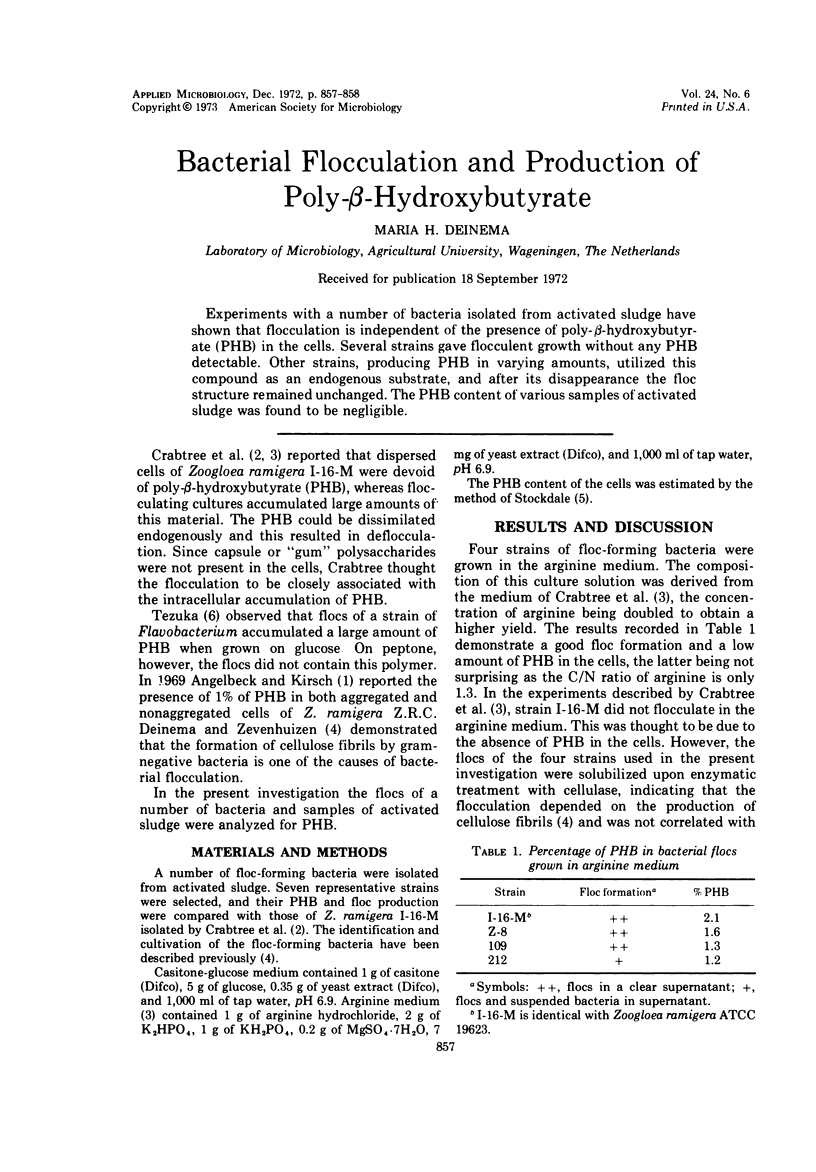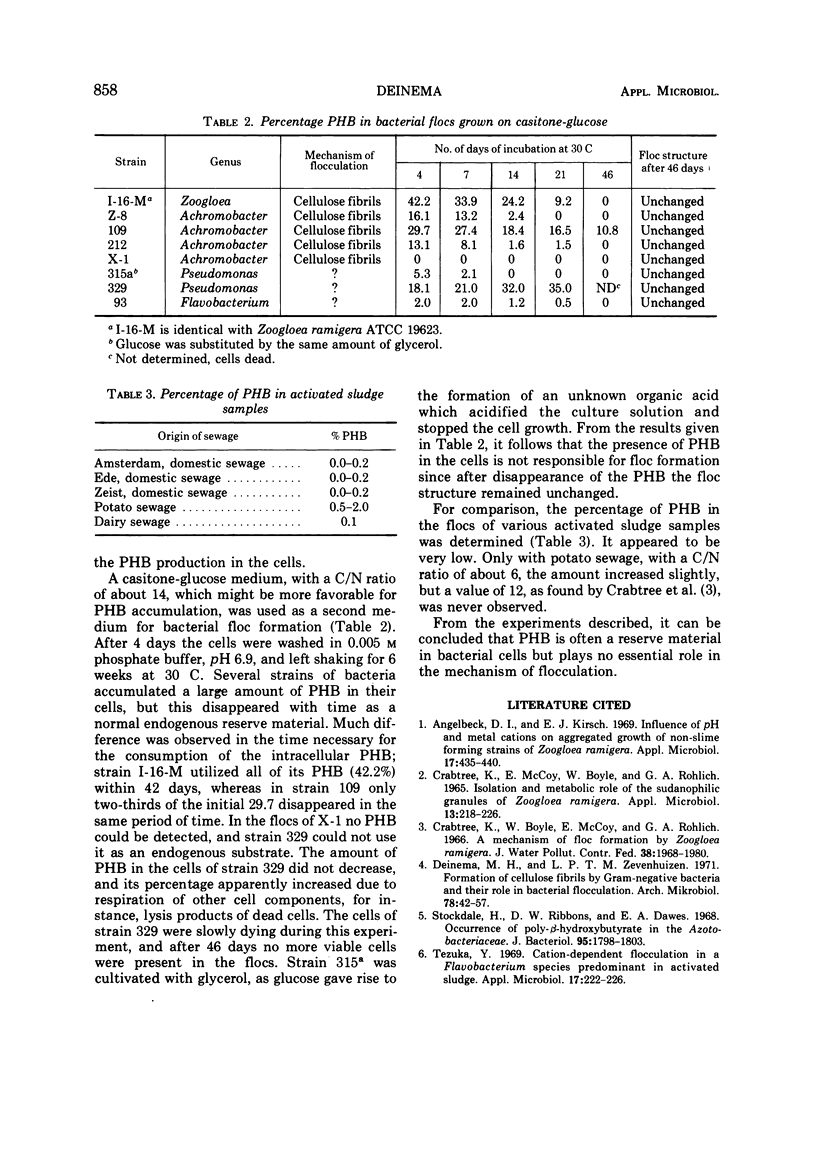Abstract
Experiments with a number of bacteria isolated from activated sludge have shown that flocculation is independent of the presence of poly-β-hydroxybutyrate (PHB) in the cells. Several strains gave flocculent growth without any PHB detectable. Other strains, producing PHB in varying amounts, utilized this compound as an endogenous substrate, and after its disappearance the floc structure remained unchanged. The PHB content of various samples of activated sludge was found to be negligible.
Full text
PDF

Selected References
These references are in PubMed. This may not be the complete list of references from this article.
- Angelbeck D. I., Kirsch E. J. Influence of pH and metal cations on aggregative growth of non-slime-forming strains of Zoogloea ramigera. Appl Microbiol. 1969 Mar;17(3):435–440. doi: 10.1128/am.17.3.435-440.1969. [DOI] [PMC free article] [PubMed] [Google Scholar]
- CRABTREE K., MCCOY E., BOYLE W. C., ROHLICH G. A. ISOLATION, IDENTIFICATION, AND METABOLIC ROLE OF THE SUDANOPHILIC GRANULES OF ZOOGLOEA RAMIGERA. Appl Microbiol. 1965 Mar;13:218–226. doi: 10.1128/am.13.2.218-226.1965. [DOI] [PMC free article] [PubMed] [Google Scholar]
- Crabtree K., Boyle W., McCoy E., Rohlich G. A. A mechanism of floc formation by Zoogloea ramigera. J Water Pollut Control Fed. 1966 Dec;38(12):1968–1980. [PubMed] [Google Scholar]
- Deinema M. H., Zevenhuizen L. P. Formation of cellulose fibrils by gram-negative bacteria and their role in bacterial flocculation. Arch Mikrobiol. 1971;78(1):42–51. doi: 10.1007/BF00409087. [DOI] [PubMed] [Google Scholar]
- Stockdale H., Ribbons D. W., Dawes E. A. Occurrence of poly-beta-hydroxybutyrate in the Azotobacteriaceae. J Bacteriol. 1968 May;95(5):1798–1803. doi: 10.1128/jb.95.5.1798-1803.1968. [DOI] [PMC free article] [PubMed] [Google Scholar]
- Tezuka Y. Cation-dependent flocculation in a Flavobacterium species predominant in activated sludge. Appl Microbiol. 1969 Feb;17(2):222–226. doi: 10.1128/am.17.2.222-226.1969. [DOI] [PMC free article] [PubMed] [Google Scholar]


